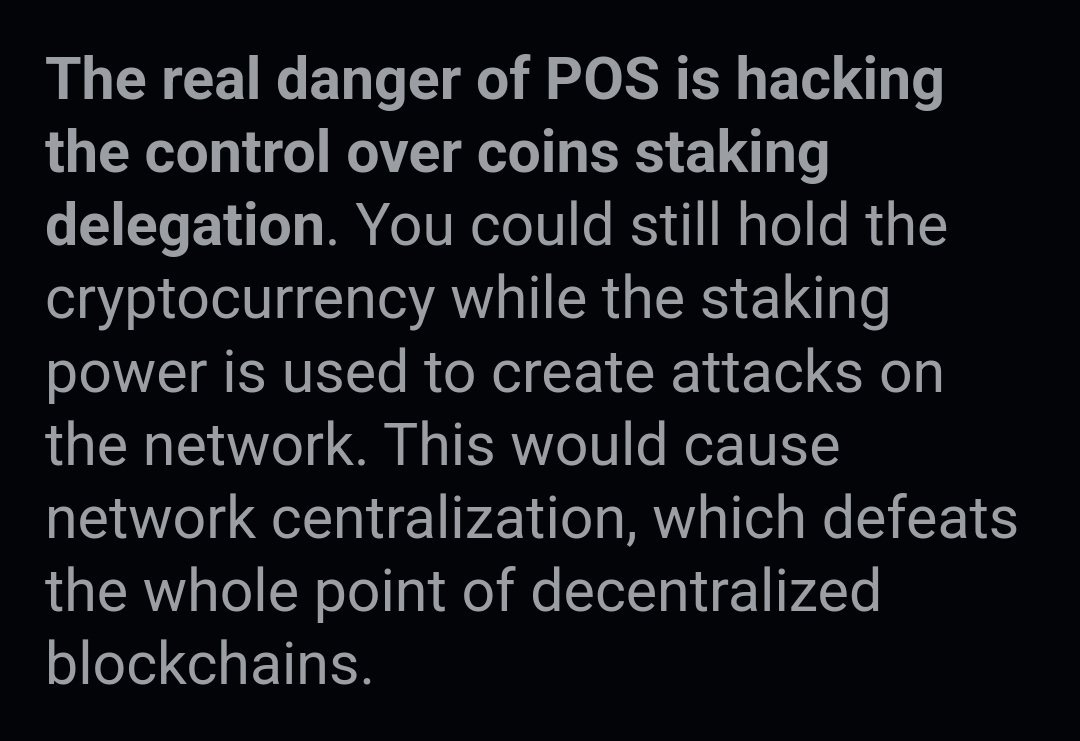Proof of Stake (PoS) and Proof of Work (PoW) are two consensus mechanisms used in blockchain networks to validate and verify transactions. While both have their strengths and weaknesses, PoS is often considered to be less secure than PoW due to several key factors.
Long-Range Attacks:
• In a long-range attack, an attacker creates an alternate history of the blockchain by generating a fork that dates back a significant period. This allows them to rewrite transactions and potentially double-spend.Nothing at Stake Problem:
• The "Nothing at Stake" problem occurs when validators are incentivized to vote on multiple forks of the blockchain simultaneously, as there is no cost associated with doing so. This can lead to network instability.Stake Grinding:
• Stake grinding refers to the manipulation of randomization processes used in PoS to influence block validation. An attacker with a significant stake may attempt to grind for favorable outcomes.Sybil Attacks:
• In a Sybil attack, an attacker controls multiple nodes on the network to gain an unfair advantage. In PoS, this could allow them to control a significant portion of the total stake and potentially carry out malicious activities.Nothing to Lose Attacks:
• Similar to the "Nothing at Stake" problem, in a "Nothing to Lose" attack, validators have little to lose by participating in malicious behavior, as their stake is not at risk.51% Attacks and Stake Withholding:
• In PoS, an attacker with more than 51% of the total stake can potentially control the blockchain. They can engage in double-spending, censorship, or rewriting of the transaction history.Weak Subjectivity:
• Weak subjectivity refers to the reliance on external sources to determine the current state of the blockchain. If a user relies on a malicious source, they could be tricked into accepting a fraudulent version of the blockchain.
In conclusion, PoS consensus mechanisms have their own set of security risks, including long-range attacks, the "Nothing at Stake" problem, and various forms of stake-based attacks. Understanding and mitigating these risks is crucial for the security and stability of PoS-based blockchain networks.
Sources:
https://www.linkedin.com/pulse/top-disadvantages-proof-of-stake-consensus-mechanism-the-coin-times/
https://www.cryptopolitan.com/is-proof-of-stake-secure/
https://blockgeeks.com/guides/proof-of-work-vs-proof-of-stake/
https://www.truthcoin.info/blog/pow-and-mining/
https://ghoststaking.com/nothing-at-stake-long-range-attacks/
https://medium.com/@abhisharm/understanding-proof-of-stake-through-its-flaws-part-3-long-range-attacks-672a3d413501
https://blockchain-academy.hs-mittweida.de/courses/game-theory-blockchain/lessons/attacks-on-proof-of-stake-pos/topic/long-range-attack-in-proof-of-stake/
https://river.com/learn/proof-of-work-pow-vs-pos-proof-of-stake/




